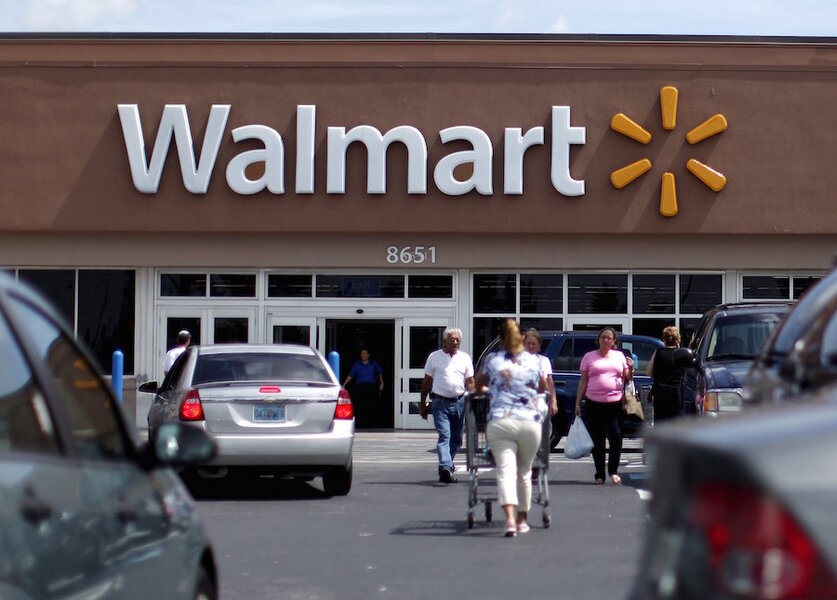Walmart launches mobile payment system. Will more retailers follow?
Loading...
Walmart customers may be able to leave their wallets at home for their next shopping trip.
The retail giant announced Thursday that it will be launching its own mobile payment system in select stores. The new feature, Walmart Pay, will be an addition to the existing Walmart app and allow customers to store credit card information and other payment methods on their phones. At the register, users would open the app and use Walmart Pay to scan a QR code on the card reader. The app will finish the transaction.
"We needed a solution that offered mobile payment access to as many of our customers as possible," Walmart Senior Vice President of Service Daniel Eckert said to USA Today.
While Walmart executives hope the new payment method will streamline the shopping experience, questions linger over the impact a Walmart exclusive payment system will have on another, earlier mobile payment venture attached to the company.
Walmart is a leading member of a group of major retailers called Merchant Customer Exchange (MCX). The group was formed in 2012 and has been trying to bring a mobile payment system, CurrentC, to market, initially with the idea to bypass credit card networks and reduce the fees retailers pay them. Efforts became more urgent after Apple Pay was launched in 2014. So far CurrentC has only achieved limited testing.
Initially, exclusivity agreements within MCX meant some retailers were more receptive to accepting Apple Pay than others at its launch. However, with CurrentC still in development, many members have begun accepting and working with Apple Pay in the year or so since – Rite Aid has restored Apple Pay compatibility in their system, Best Buy and Kohl’s support Apple Pay, and retail giant Target supports the mobile wallet system for payments on through its own app (it still doesn’t allow Apple Pay for in store purchases).
Walmart’s new payment system could signal an exodus from CurrentC onto systems unique to individual stores that can integrate with payment options like Apple Pay or Android Pay. Walmart Pay already has the ability to pair with mobile wallets as a preferred payment type, but has no current partnerships.
“With the release of Walmart Pay, it is clear that MCX and CurrentC will likely either not be released or be lost in the noise of other proprietary systems.” Brian Roemmele, founder of PayFinders.com, told Forbes.
Walmart executives said they will remain a member of MCX and the two payment options (CurrentC and Walmart Pay) are different solutions, according to Reuters. Walmart Pay also has the ability to potentially integrate with a future CurrentC.
Walmart Pay is being rolled out at select stores in Bentonville, Ark., where the company is based. The app is set to be available nationwide in the first half of 2016.
"We're really working hard to create a seamless shopping experience," said Neil Asche, CEO of global e-commerce at Wal-Mart, to reporters on Wednesday.








